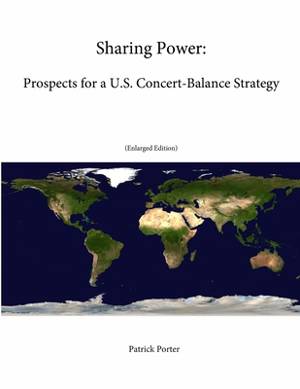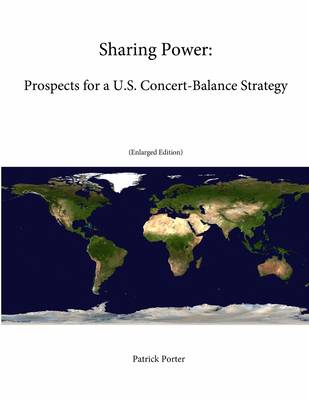
- Afhalen na 1 uur in een winkel met voorraad
- Gratis thuislevering in België vanaf € 30
- Ruim aanbod met 7 miljoen producten
- Afhalen na 1 uur in een winkel met voorraad
- Gratis thuislevering in België vanaf € 30
- Ruim aanbod met 7 miljoen producten
Zoeken
Sharing Power
Prospects for a U.S. Concert-Balance Strategy (Enlarged Edition)
Patrick Porter, Strategic Studies Institute, U S Army War College
Paperback | Engels
€ 27,45
+ 54 punten
Omschrijving
The subject of U.S. grand strategy has been getting increasing attention from the policy and academic communities. But too often the debate suffers from being too reductionist, limiting America's choices to worldwide hegemony or narrow isolation. There is a wide spectrum of choices before Washington that lie "somewhere in the middle." Too often not enough thought is given to how such alternative strategies should be designed and implemented. The future cannot be known, and earlier predictions of American decline have proven to be premature. However, there is a shift in wealth and power to the extent that America may not be able to hold on to its position as an unrivalled unipolar superpower. Therefore, it is worth thinking about how the United States could shape and adjust to the changing landscape around it. What is more, there are a number of interlocking factors that mean such a shift would make sense: transnational problems needing collaborative efforts...
Specificaties
Betrokkenen
- Auteur(s):
- Uitgeverij:
Inhoud
- Aantal bladzijden:
- 92
- Taal:
- Engels
Eigenschappen
- Productcode (EAN):
- 9781304049858
- Verschijningsdatum:
- 18/05/2013
- Uitvoering:
- Paperback
- Formaat:
- Trade paperback (VS)
- Afmetingen:
- 216 mm x 279 mm
- Gewicht:
- 235 g

Alleen bij Standaard Boekhandel
+ 54 punten op je klantenkaart van Standaard Boekhandel
Beoordelingen
We publiceren alleen reviews die voldoen aan de voorwaarden voor reviews. Bekijk onze voorwaarden voor reviews.











